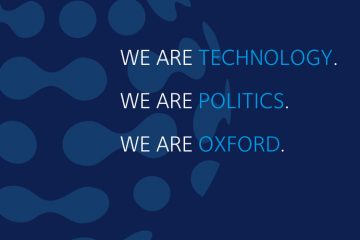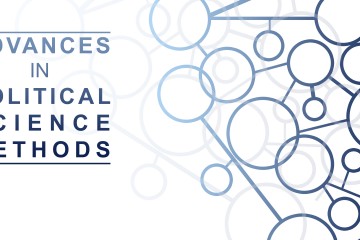
Our Day Will Come: The Inevitability of Irish Unification as Brexit Approaches
On June 23rd, 2016, the citizens of the UK voted to leave the European Union. This began an unprecedented process of dissociation, commonly known as Brexit. Among the many challenges that Brexit poses is how to handle the border between Britain and the Republic of Ireland. In the recent past, the “soft” border between the two nations has allowed for the free flow of people and goods. However, if Brexit negotiations fail, a “hard” border will replace the currently soft border between the Republic and Northern Ireland. This presents a problem because under present conditions the border allows for mutually beneficial economic and social exchange, as well as having been instrumental in guaranteeing the Northern Irish peace process. This border …

Collateral Benefit: Brexit as Catalyst for European Structural Reform?
Brexit, if it has to happen, could have a silver lining. It could be an opportunity to reform and refashion the European project by making good on the aspiration of an ever-closer political union, needed today more than ever before. The Need for a Stronger Union President Macron addressing the need for EU reform with deeper political integration 26 September 2017 at the Sorbonne in Paris. Photograph: Ludovic Marin/Reuters Judging from my experience in the UN climate change negotiations, the EU can be a major international player and a force for good, but only if it ceases to ‘punch below its weight’ due to a lack of political union. This is why I fully concur with the view expressed by …

No New Cold War: Give Strategic Interdependence a Chance
With its concept of strategic autonomy, the EU risks triggering a new Cold War. In the context of globalisation and digitisation, it should focus on strategic interdependence instead. Annegret Bendiek provides a counterpoint to Paul Timmers on strategic autonomy and cybersecurity. Europe’s foreign and security policy framework has changed fundamentally since Donald Trump took office. With the US’s unilateral withdrawal from the Paris Climate Agreement, declaration that NATO was “obsolete”, unilateral recognition of Jerusalem as the capital of Israel, and termination of the nuclear agreement with Iran, the political atmosphere in EU-US talks has noticeably cooled when it comes to upholding multilateral agreements. Meanwhile cooperation on a technical level in counter-terrorism and cybersecurity is still vital. Punitive US tariffs on European …

Tracking the Twitter conversation on the Irish abortion referendum
In this article, we use TwitterTrails[i] to follow and analyse the online conversation about the contentious Irish abortion referendum. This referendum offers a useful opportunity for study because it is one of the first referendums in a Western democracy since 2016, when the phenomenon of misinformation on the Internet first gained prominence. Following the revelations of foreign social media interference during the 2016 U.S. presidential election, the Irish referendum was widely seen as a test for social media companies’ ability to protect voters from election meddling.[ii] Some social media companies, such as Facebook and Google, had taken action and previously introduced tools to improve transparency. Indeed, eventually, Facebook blocked political advertising from groups outside Ireland altogether. Google soon joined this …

Cybersecurity is forcing a rethink of strategic autonomy
Just a few days ago, European Commission President Jean-Claude Juncker presented his 2018 State of the Union speech with the title “The Hour of European Sovereignty”. In the speech, he argues that the time has come for the EU “to become more autonomous and live up to our global responsibilities”. The question is how to make this ambition become a reality, how to achieve strategic autonomy. Especially in the context of cybersecurity, strategic autonomy is becoming a widely discussed topic. The growing interest in the link between “digital” or “cyber” and strategic autonomy is driven by the increased dependency on transformative digital technologies throughout the economy and society, combined with the explosive growth of cyberthreats and incidents. The political context …

Anonymity in the Age of Ubiquitous Facial Recognition
Facial Recognition Technology will have a severe impact on society in the future, resulting in a loss of anonymity for everybody. The Russian artist Egor Tsvetkov demonstrated with an experiment that it is already possible today to identify random people on the metro by just using their photos and a facial recognition app. Currently this was done by processing images afterwards with face search and augmenting it with human verification, but it is not difficult to imagine every cell phone or connected car being able to identify anyone’s face and perform a search on the web within less than a second. Instead of classical fears of big brother’s mass surveillance, there might be technology ready for peer-to-peer mass surveillance. The …

When does traditional statistics become machine learning?
When does traditional statistical modelling (TSM) become machine learning (ML)?[i] “Machine learning” has truly become a buzzword that is applied rather liberally to a wide range of modelling applications. But, the difference is far from a question of semantics: there are fundamental differences between ML and TSM that data practitioners should keep in mind. Similarities But, let’s start off with some commonalities between ML and TSM. In both disciplines our aim is to build a (statistical) model (to use TSM terminology) that minimises loss, that is, that achieves the smallest possible difference between observed values and the values estimated by the model. In so doing, we have to achieve a successful balance between model complexity and generalisability: pick too complex a …

The Shorter, the Better? What it Takes to and What to Take Away from Publishing a Very Short Article
A few months ago, I published an exceptionally short paper presenting experimental evidence on a particular issue of survey methodology. This experience has taught me valuable lessons about conveying the necessary information under extreme restrictions on the word count. In its original version, my paper was 2,300 words long and it was formatted in accordance with the convention of the field: an introduction highlighting the relevance of the research question and the gaps in the existing literature, an empirical section describing the methods and presenting the results, and a conclusion discussing implications, limitations, and offering directions for future research. Since the study relied on experimental methods and was already short, I decided to submit this contribution to the Journal of …









